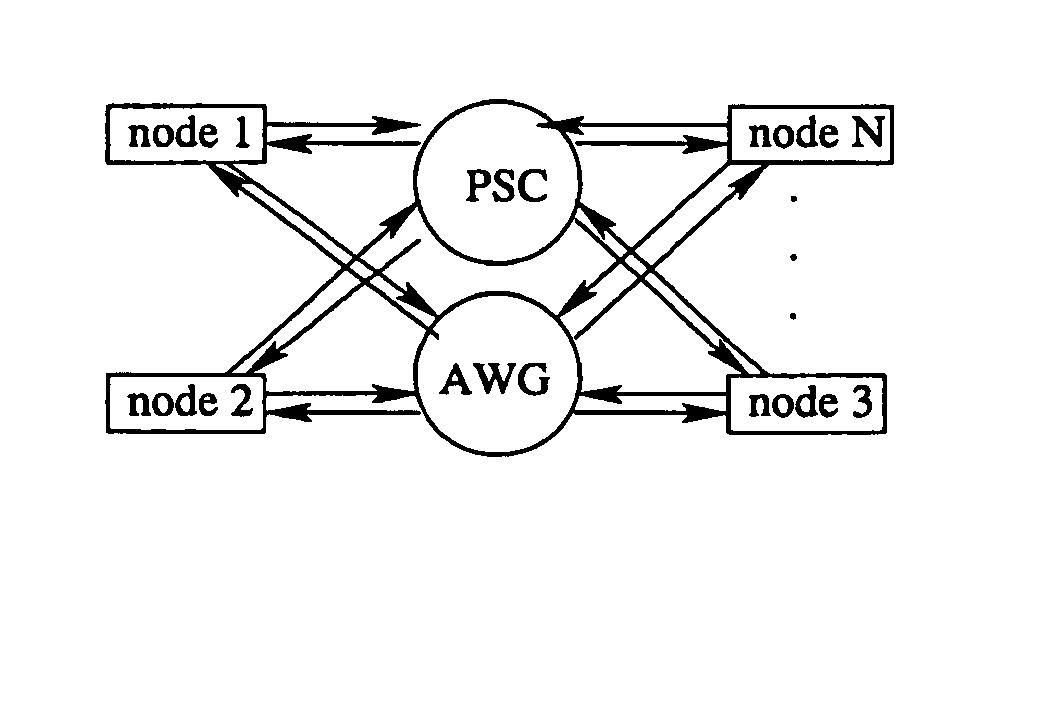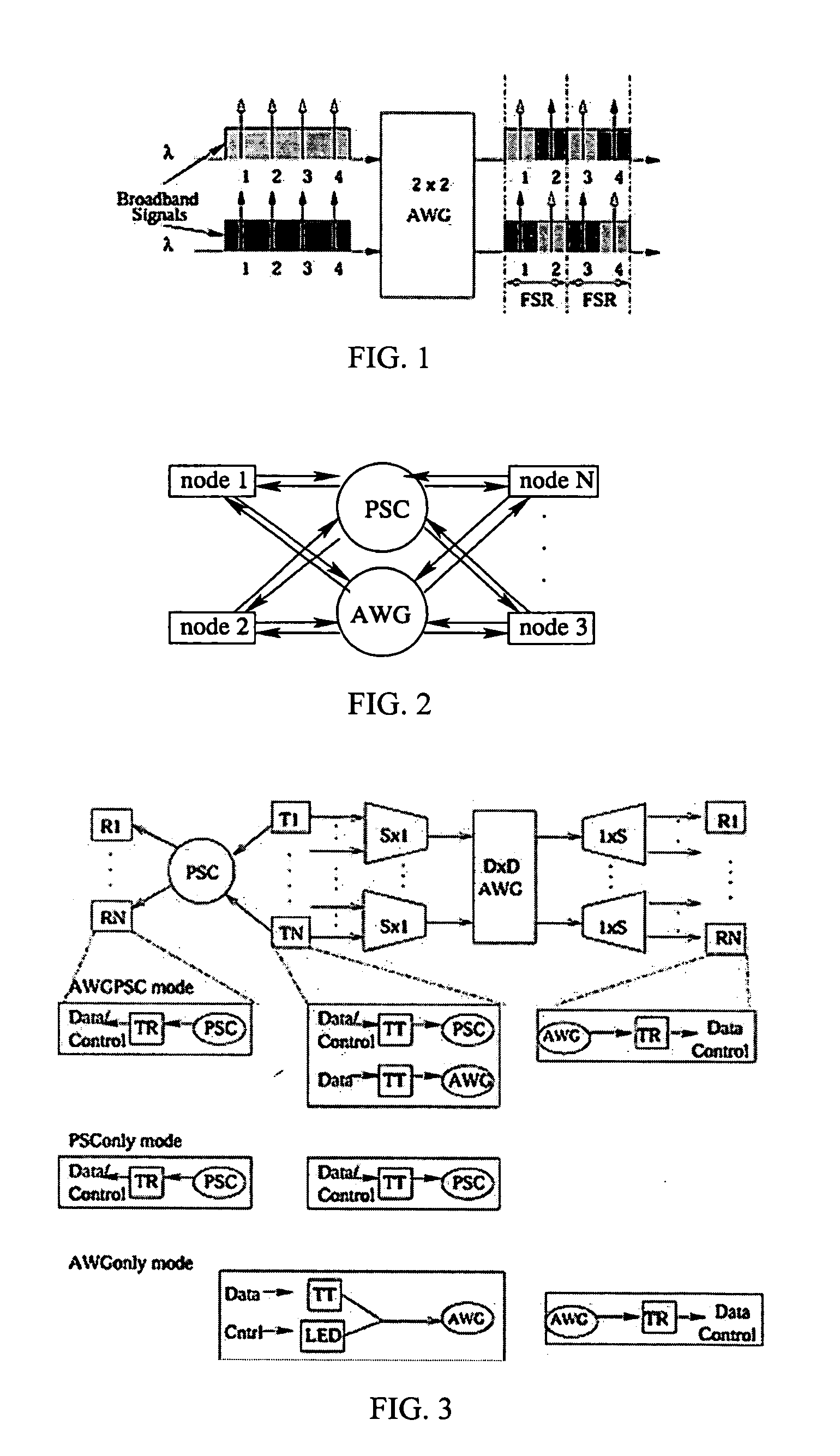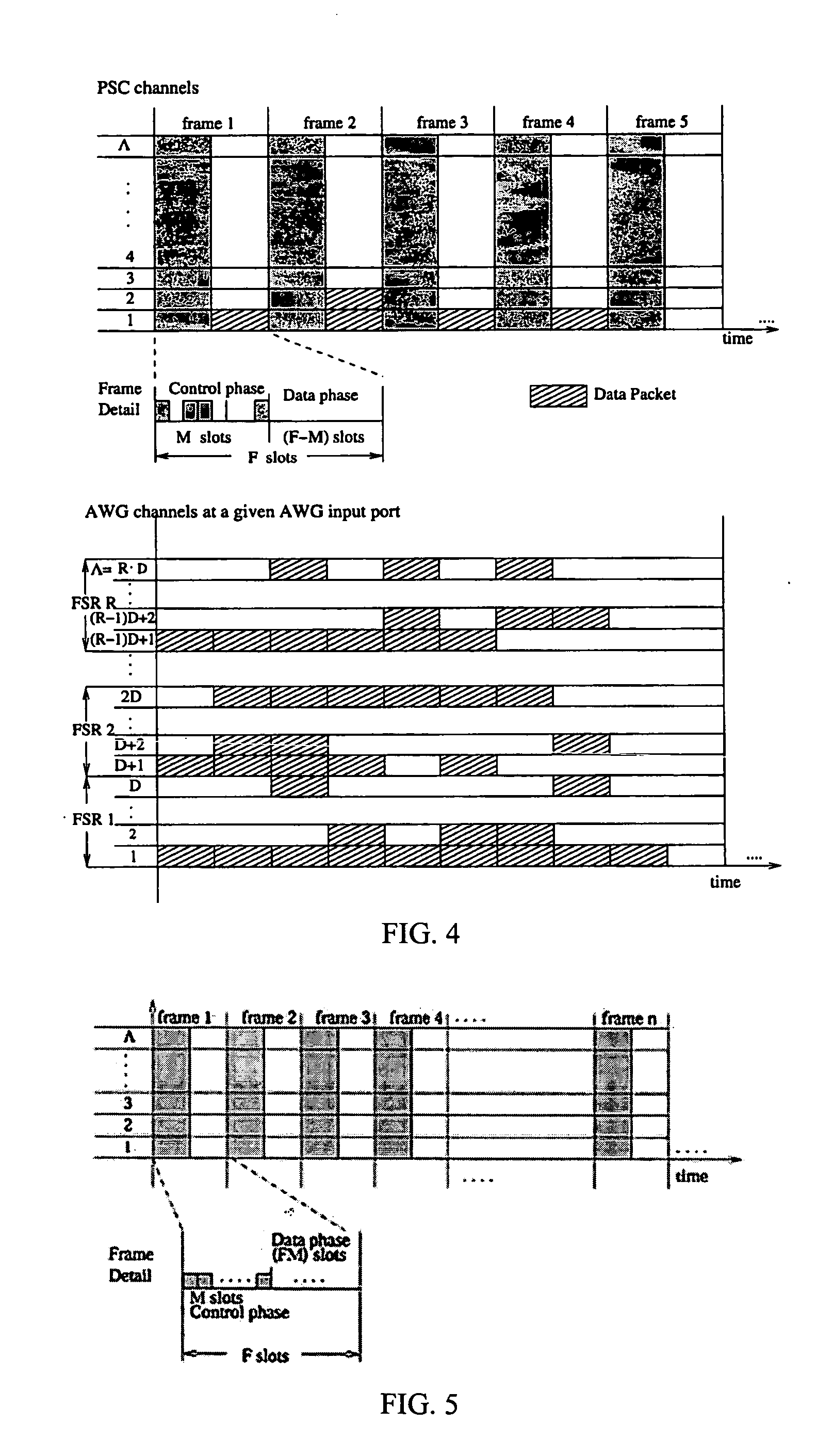Performance enhanced single-hop WDM network with heterogeneous protection
a heterogeneous protection and single-hop technology, applied in the field of communication networks, can solve the problems of single-hop network failure, single-hop network failure, and inability to fully recover network connectivity, and achieve the effect of high-efficiency data transpor
- Summary
- Abstract
- Description
- Claims
- Application Information
AI Technical Summary
Benefits of technology
Problems solved by technology
Method used
Image
Examples
Embodiment Construction
I. Introduction
[0031] This specification is organized as follows. In the following subsection, we review related work. In Section II we briefly describe the properties of the AWG and the PSC. In Section III we describe the architecture of the AWG∥PSC network. In Section IV we develop MAC protocols for the three operating modes of the AWG∥PSC network. In Section V we develop a probabilistic model of the network and analyze the throughput and delay performance of the three operating modes. In Section VI we use our analytical results to conduct numerical investigations. We also verify our analytical results with simulations. We summarize our conclusions in Section VII.
A. Related Work
[0032] Single-hop networks based on one PSC as the central broadcasting device have been studied extensively since WDM technology was first proposed for optical networks. References [1], [10], [11], [12], [13], [14], [15], [16], [17], [18], [19], [20], [21] represent a sample of the numerous proposals of...
PUM
 Login to View More
Login to View More Abstract
Description
Claims
Application Information
 Login to View More
Login to View More - R&D
- Intellectual Property
- Life Sciences
- Materials
- Tech Scout
- Unparalleled Data Quality
- Higher Quality Content
- 60% Fewer Hallucinations
Browse by: Latest US Patents, China's latest patents, Technical Efficacy Thesaurus, Application Domain, Technology Topic, Popular Technical Reports.
© 2025 PatSnap. All rights reserved.Legal|Privacy policy|Modern Slavery Act Transparency Statement|Sitemap|About US| Contact US: help@patsnap.com



